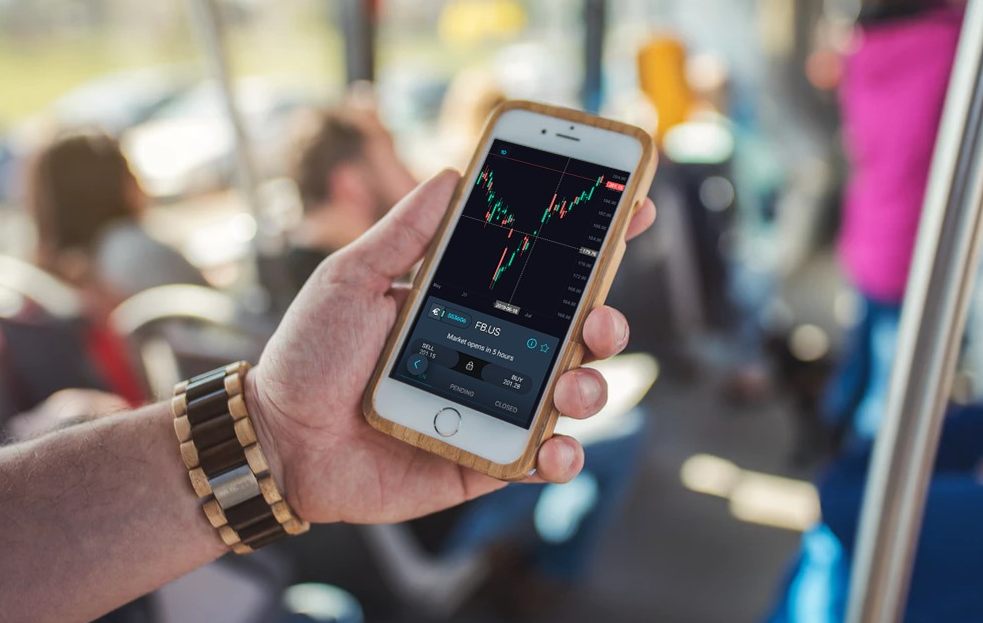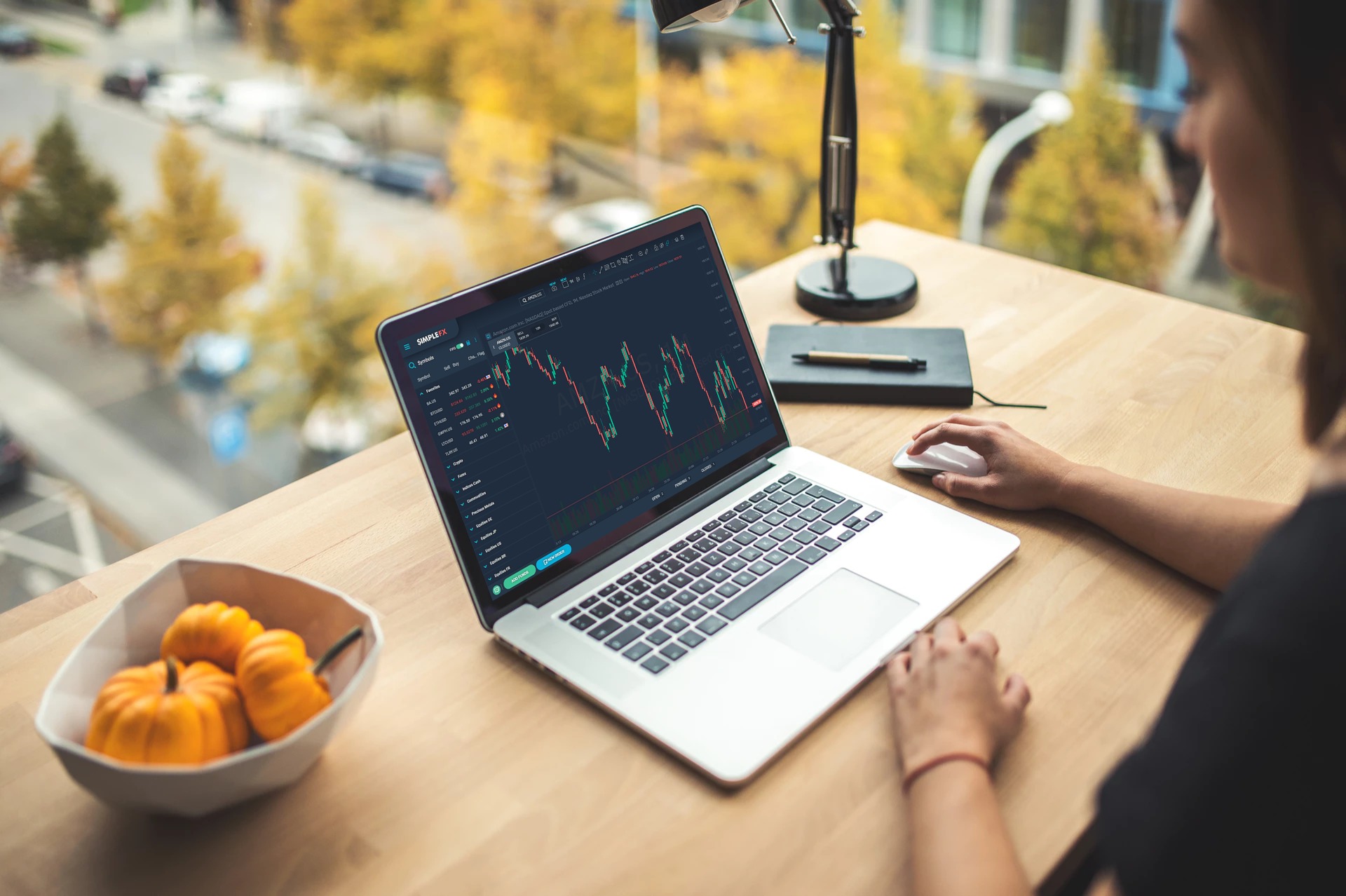Basics of Cryptocurrency Trading: Strategies and Tips for Beginners

Navigating the world of crypto can be a hard task for beginners. With hundreds of cryptocurrencies available, getting started as a crypto trader can feel overwhelming. In this article, we will explore the fundamental basics that newcomers should focus on to start their journey into the world of crypto and learn crypto trading.
Understanding Different Types of Cryptos
How to start crypto trading? First of all, learn the cryptocurrency's definition. Cryptocurrency is a type of digital or virtual currency that uses cryptography for security and operates independently of a central bank. It is decentralized and typically utilizes a technology called blockchain to achieve transparency, security, and immutability. Unlike traditional currencies, cryptocurrencies exist only in digital form and are not controlled by any single entity, making them resistant to government interference and manipulation.
The rapid development of crypto markets has been driven by several factors, including increasing adoption by individuals and institutions, technological advancements, and the potential for DeFi apps. As a result, the cryptocurrency landscape has become increasingly diverse, with a wide variety of cryptocurrencies serving different purposes and use cases.
Cryptocurrency markets operate on decentralized networks where participants can buy, sell, and trade digital assets. How to learn cryptocurrency trading, you may ask? Start with an overview of how cryptocurrency markets work:
Transaction system
- Cryptocurrency transactions are recorded on a blockchain, a distributed ledger that stores all transaction data in blocks linked together in a chain. Each block contains a set of transactions that are verified by network participants (miners) through cryptographic algorithms.
- Users store their cryptocurrencies in wallets, which are secure digital containers that hold private keys for accessing and managing their assets.
- Public keys serve as addresses for receiving funds, while private keys are used to sign transactions and prove ownership of the assets.
Buying and selling cryptocurrencies
- You can buy and sell cryptocurrencies on online platforms called exchanges, where users can trade various digital assets using fiat currencies or other cryptocurrencies.
- Users can place market orders to buy or sell at the current market price or set limit orders to trade at a specific price.
- Cryptocurrencies are traded in pairs, such as BTC/USD or ETH/BTC, indicating the exchange rate between the two assets.
Mining
- Some cryptocurrencies like Bitcoin use mining to validate transactions and secure the network. Miners solve complex mathematical puzzles to add new blocks to the blockchain and receive rewards in the form of newly minted coins and transaction fees.
- In PoW mining, miners compete to solve cryptographic puzzles using computational power, ensuring the integrity of the blockchain through consensus.
Learning cryptocurrency trading, you should consider factors that affect cryptocurrency prices:
- Supply and demand dynamics play a significant role in cryptocurrency prices. Increased demand from investors or adoption of real-world applications can drive prices up.
- Regulatory developments and government policies can impact prices by affecting market sentiment and adoption.
- News, social media trends, and investor sentiment can influence prices, leading to volatility in the market.
- Upgrades to blockchain technology, new features, or security improvements can impact the value of cryptocurrencies.
The state of the economy can also influence cryptocurrency prices in several ways:
- During economic uncertainty or market instability, some investors view cryptocurrencies like Bitcoin as a safe-haven asset similar to gold, leading to increased demand and price appreciation.
- Cryptocurrencies are often considered inflation hedges due to their limited supply and deflationary nature, attracting investors looking to protect their wealth during times of economic uncertainty.
- While cryptocurrencies are generally considered uncorrelated assets, they can still be influenced by broader market trends and economic indicators.
Understanding all these factors listed above is essential for navigating the cryptocurrency market effectively.
What are Crypto Assets?
Crypto assets are digital assets that use cryptographic technology to secure financial transactions, control the creation of additional units, and verify the transfer of assets. These assets are typically built on blockchain or distributed ledger technology, enabling secure and transparent peer-to-peer transactions without the need for intermediaries like banks.
Crypto assets encompass a wide range of digital tokens and coins, including cryptocurrencies like Bitcoin and Ethereum, utility tokens used in decentralized applications (dApps), security tokens representing ownership of real-world assets, non-fungible tokens (NFTs) for unique digital assets, and stablecoins pegged to fiat currencies to reduce price volatility.
You can use crypto assets in many different ways:
- Digital currencies that can be used for online purchases, remittances, and cross-border payments. They offer fast and low-cost transactions compared to traditional banking systems.
- Crypto assets are used in DeFi applications to provide financial services such as lending, borrowing, staking, yield farming, and decentralized exchanges without the need for traditional financial intermediaries.
- Some crypto assets like Ethereum enable the creation and execution of smart contracts, self-executing agreements with the terms directly written into code. Smart contracts automate and enforce contract terms without the need for intermediaries.
- Crypto assets facilitate the tokenization of real-world assets like real estate, art, or commodities, allowing fractional ownership and increased liquidity through digital representation on a blockchain.
Talking about the advantages of crypto assets we should mention:
- Crypto assets operate on decentralized networks, reducing reliance on centralized authorities and promoting censorship resistance.
- Cryptographic technology ensures secure transactions and data integrity, protecting assets from fraud and hacking.
- Blockchain technology provides a transparent and immutable ledger of transactions, enhancing trust among participants.
- Crypto assets enable borderless transactions, allowing anyone with an internet connection to participate in the digital economy.
- Digital assets drive innovation in finance and technology, fostering the development of new financial products and services.
- They have the potential to provide financial services to the unbanked and underbanked populations worldwide, offering access to banking services without traditional barriers.
While crypto assets offer various advantages, they also come with risks such as price volatility, regulatory uncertainties, and security vulnerabilities. It's essential for users to understand these risks and conduct thorough research before engaging with crypto assets.
Major Crypto Categories
For beginners, understanding the different categories of cryptocurrencies is essential to navigate this complex market. Cryptocurrencies can be broadly categorized into three main types:
- Bitcoin and altcoins: Bitcoin, the first and most well-known cryptocurrency, is often considered a store of value or "digital gold." Altcoins refer to any cryptocurrency other than Bitcoin and include a wide range of digital assets such as Ethereum, Ripple, Litecoin, and many others. These cryptocurrencies often serve as mediums of exchange or platforms for various applications.
- Utility tokens: Designed to provide access to a specific product or service within a blockchain ecosystem. They are often used in decentralized applications (dApps) and represent a form of digital asset with a specific utility function within their respective platforms.
- Security tokens: Represent ownership of real-world assets such as equity in a company, real estate, or commodities. They are designed to comply with securities regulations and offer investors ownership rights in the form of digital tokens.
Each category of cryptocurrency differs in its underlying technology, purpose, and use case. Understanding these differences can help beginners make informed decisions when entering the crypto market and choosing which cryptocurrencies to invest in or utilize for specific applications. Additionally, it's important for beginners who want to learn how to trade crypto to research and understand the risks associated with each type of cryptocurrency before getting involved in the market.

Crypto Trading Strategies
A trading strategy is a method of planning and executing trades that you will follow when buying/selling digital currency. Trading strategies typically determine what trades to take, when to make them, when to exit a trade, and how much capital the trader is risking on each position.
A cryptocurrency trading strategy is a fixed plan that a trader develops to maximize profits when buying or selling crypto. In this regard, various analytical tools are used to determine those market conditions and price levels whose changes can be predicted. Crypto trading strategies vary in complexity and approach, designed to help traders maximize profits and minimize risks in the volatile crypto market.
Active Trading Strategies
Active trading is the buying and selling of cryptocurrencies to profit from price changes in short periods of time. Below we will discuss the most popular types of active strategies.
- Day trading: Day traders buy and sell cryptocurrencies within the same day, aiming to profit from short-term price movements.
- Swing trading: Swing traders hold onto their positions for a few days to a few weeks, capitalizing on medium-term price trends.
- Trend trading: Trend traders follow the direction of the market trend, either going long (buying) in an uptrend or going short (selling) in a downtrend.
- Scalping: Scalpers make quick trades to profit from small price movements, often executing many trades in a single day.
- Crypto futures trading: This strategy involves trading futures contracts based on the future price of cryptocurrencies, allowing traders to speculate on price movements without owning the underlying asset.
- Arbitrage trading: Arbitrage traders exploit price differences of the same cryptocurrency on different exchanges to make a profit.
- High-frequency trading: High-frequency traders use algorithms to execute trades at high speeds, taking advantage of small price differentials in milliseconds.
- Range trading: Range traders identify key support and resistance levels and buy low and sell high within that range until the pattern breaks.
Each strategy has its own risk profile and requires a different level of expertise and time commitment. How to start cryptocurrency trading using active strategies? Traders typically choose a strategy based on their risk tolerance, investment goals, and market conditions.
Passive Investment Strategies
Passive investment strategies involve minimal buying and selling of assets, aiming to achieve returns over the long term without frequent trading or market timing. Here are brief descriptions of three common passive investment strategies:
- Buy and hold
How it works: Investors buy assets like stocks or cryptocurrencies and hold onto them for an extended period, regardless of short-term market fluctuations.
Main Features: Requires a long-term perspective, belief in the asset's growth potential, and patience to weather market volatility. Typically lower transaction costs compared to active trading strategies.
- Index investing
How it works: Investors buy index funds or exchange-traded funds (ETFs) that track a specific market index (e.g., S&P 500), providing broad market exposure.
Main features: Offers diversification across a wide range of assets, low fees, and the potential to match the overall market performance rather than trying to beat it.
- Dollar-cost averaging (DCA)
How it works: Investors invest a fixed amount of money at regular intervals, regardless of asset price fluctuations. This strategy aims to reduce the impact of market volatility on the overall investment.
Main features: Help mitigate the risk of making a large investment at an inopportune time by spreading purchases over time. Works well for investors who want to avoid trying to time the market.
These passive strategies are popular among investors seeking a more hands-off approach to investing, emphasizing long-term growth and minimizing the impact of short-term market movements.

Technical and Fundamental Analysis for Beginners
Technical and fundamental analysis are two essential tools for traders, including those in the cryptocurrency market, to make informed decisions and potentially increase profitability. Technical analysis involves studying past market data, primarily price and volume, to forecast future price movements. In the highly volatile cryptocurrency market, it helps traders identify trends, support/resistance levels, and potential entry/exit points. By analyzing charts and indicators, traders can make more educated decisions based on historical price patterns.
Fundamental analysis focuses on evaluating the intrinsic value of an asset by examining factors like project team, technology, adoption, market competition, regulatory environment, and overall market sentiment. Understanding the fundamentals of a cryptocurrency project can help traders assess its long-term viability and growth potential. This analysis can guide investment decisions based on the project's roadmap, partnerships, use cases, and community support.
Trading crypto for beginners and experienced traders involves analysis for a few reasons:
- Cryptocurrency prices can experience extreme fluctuations, making it crucial to use analysis to navigate these unpredictable movements effectively.
- Analysis helps traders identify potential risks and opportunities, allowing for better risk management strategies such as setting stop-loss orders or position sizing.
- By combining technical and fundamental analysis, traders can make more informed decisions about when to buy, sell, or hold a cryptocurrency based on a comprehensive view of the market.
- Utilizing analysis gives traders a competitive edge by enabling them to anticipate market trends and react swiftly to changing conditions, potentially increasing profitability.
Fundamental Analysis
Fundamental analysis is a method used to evaluate the intrinsic value of an asset, such as a stock, bond, or cryptocurrency, by examining various factors that could affect its price. It involves analyzing qualitative and quantitative data to assess the financial health, growth potential, and overall value of the asset.
Fundamental analysis includes a few important features:
- Evaluate the whitepaper
Purpose: The whitepaper is a crucial document that outlines the project's goals, technology, use case, tokenomics, team members, and roadmap.
Analysis: Fundamental analysts evaluate the whitepaper to understand the project's vision, technology, and potential market impact. They assess the feasibility of the project, the problem it aims to solve, and the uniqueness of its approach.
- Analyze utility and use cases
Utility: Fundamental analysis involves assessing the utility of the cryptocurrency within its ecosystem. Analysts look at how the token is used, its value proposition, and whether it solves a real-world problem.
Use cases: Understanding the practical applications of cryptocurrency helps analysts determine its long-term viability and potential for adoption.
- Investigate market trends
Market position: Fundamental analysis includes studying market trends to understand where cryptocurrency stands in relation to competitors and industry trends.
Growth potential: Analysts assess the growth potential of the project based on market demand, adoption rates, partnerships, and future developments.
- Analyze news, social sentiment, and social media following&engagement:
News impact: Fundamental analysts track news related to the project, industry developments, regulatory changes, and partnerships that could impact the cryptocurrency's price.
Social sentiment: Monitoring social media platforms for sentiment analysis helps gauge community perception, investor sentiment, and potential market reactions.
Engagement: Analyzing social media following and engagement metrics provides insights into community support, project visibility, and market influence.
Incorporating these aspects of fundamental analysis can help traders and investors make informed decisions about cryptocurrency investments based on a comprehensive understanding of the project and market dynamics.
Technical Analysis
Technical analysis is a method of evaluating securities by analyzing statistics generated by market activity, such as historical prices and trading volume. It focuses on studying past market data to predict future price movements and identify trading opportunities.
How to crypto trade using technical analysis:
- Reading price charts. They display the historical price movements of a security over a specific period. Technical analysts use various types of charts, such as line charts, bar charts, and candlestick charts, to visualize price trends and patterns.
- Candlestick patterns. They are graphical representations of price movements within a specific time frame. Analysts use these patterns to identify potential trend reversals or continuations based on the shapes and formations of the candlesticks.
- Support and resistance levels. Support levels are price levels at which security tends to find buying interest, preventing it from falling further. Resistance levels are price levels at which security tends to encounter selling pressure, preventing it from rising higher.
- Moving averages. Trend-following indicators that smooth out price data to identify trends over specific time periods. Analysts use moving averages to determine the direction of the trend and potential support or resistance levels.
- Oscillators and momentum indicators. They help traders identify overbought or oversold conditions in the market. These indicators measure the speed and change of price movements, providing insights into potential trend reversals.
- Relative strength index (RSI). It is a momentum oscillator that measures the speed and change of price movements. It ranges from 0 to 100 and is used to identify overbought or oversold conditions in a security.
- Moving average convergence divergence (MACD). A trend-following momentum indicator that shows the relationship between two moving averages of a security's price. Traders use the MACD to identify changes in the strength, direction, momentum, and duration of a trend.
- Chart patterns. They are formations that appear on price charts and provide insights into potential future price movements. Traders use chart patterns, such as head and shoulders, double tops, and double bottoms, to make trading decisions based on pattern recognition.
- Head and shoulders. A pattern consists of three peaks with the middle peak (head) being higher than the other two (shoulders). It indicates a potential trend reversal from bullish to bearish.
- Double tops and bottoms. Reversal patterns that occur after an uptrend (double top) or downtrend (double bottom). They signal a potential trend reversal in the opposite direction.
By incorporating technical analysis tools and techniques, traders can learn cryptocurrency trading and make more informed decisions about when to enter or exit trades based on historical price data and market trends.

Steps to Work with Crypto
You can start crypto trading by following a few steps:
- Select a cryptocurrency that you want to trade. Bitcoin (BTC) and Ethereum (ETH) are popular choices, but there are thousands of other cryptocurrencies available for trading.
- Consider opening a Contract for Difference (CFD) trading account with a reputable broker that offers cryptocurrency trading. CFDs allow you to speculate on the price movements of cryptocurrencies without owning the underlying assets.
- Decide on a trading strategy based on your risk tolerance, investment goals, and time horizon. Common strategies include day trading, swing trading, and long-term investing.
- Perform technical analysis by studying price charts, identifying trends, and using indicators like moving averages and Relative Strength Index (RSI) to make informed trading decisions. Additionally, conduct a fundamental analysis by researching the technology, team, adoption, and market trends of the cryptocurrency you're trading.
- Understand the risks involved in crypto trading, including price volatility, regulatory uncertainty, security risks, and market manipulation. Only invest money that you can afford to lose and consider using risk management tools like stop-loss orders to limit potential losses.
- Keep a close eye on your trades by monitoring price movements, news events, and market sentiment. Be prepared to adjust your strategy or close your position if market conditions change or your investment thesis no longer holds.
Remember that cryptocurrency trading is highly speculative and volatile, so it's essential to stay informed, manage risks effectively, and continuously educate yourself about the market to improve your trading skills and increase your chances of success.
Conclusion
For beginners looking to trade cryptocurrency, there are several common ways to get started such as crypto exchanges, brokerage platforms, CFD trading, and P2P platforms. When learning how to trade crypto, beginners should focus on understanding the basics of cryptocurrency trading, conducting thorough research, practicing risk management, and gradually gaining experience in the market. It's crucial to start with small investments, learn from mistakes, and continuously educate oneself to navigate the volatile world of cryptocurrency trading successfully.

To write comments, you need to register or log in